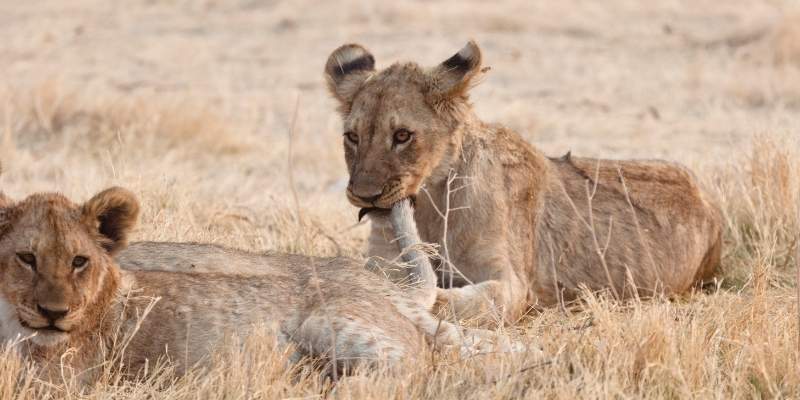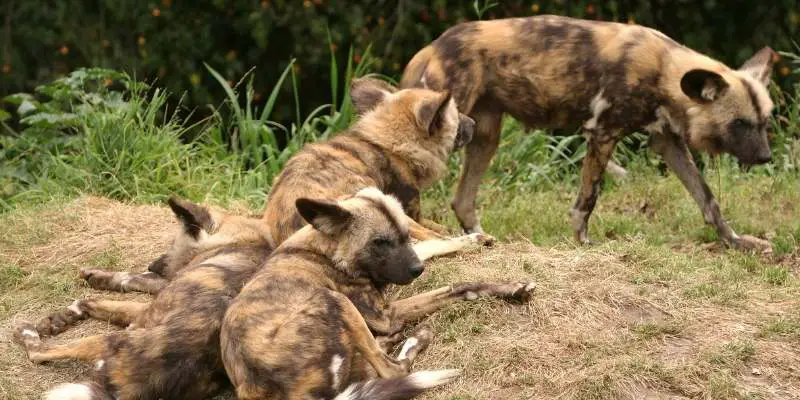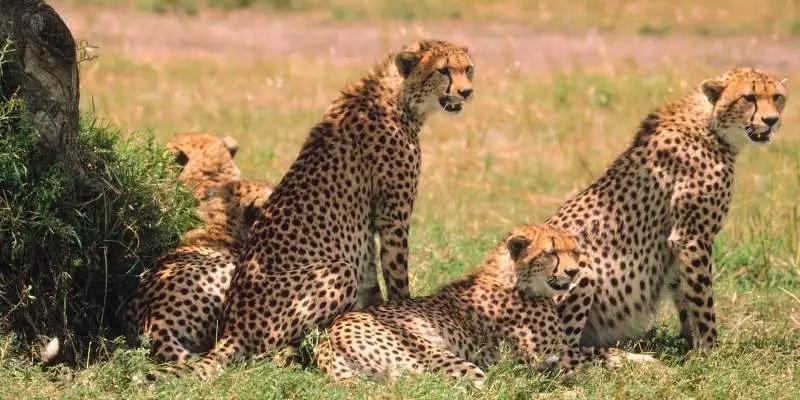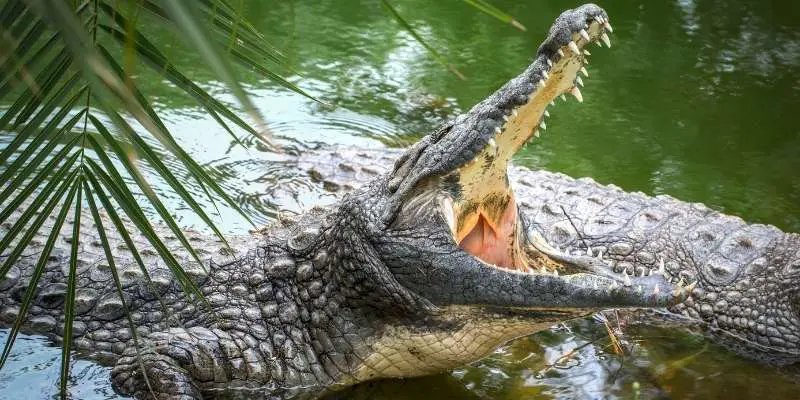Zebras are one of the most beautiful animals in the world, capturing eyes and turning heads whenever anyone passes by them in a zoo or park. They live mostly on the African continent and share their natural habitat with many other animals in the wild.
They are easily distinguishable due to the patterns on their skin and their general appearance. Zebras have white skin with thick, black stripes running down the entirety of their body. They have small ears that point upwards and hair that runs from the back of their head down their neck.
Although most people like to compare zebras to horses, they actually bear more of a resemblance to donkeys.
Zebras are fairly strong animals, with hind legs strong enough to incapacitate a lion if struck cleanly. This strength is particularly important for Zebras when you consider the environment in which they reside.
As mentioned previously, Zebras share their natural habitat with many other species of animals. The African deserts and forests, where Zebras live, are renowned for the dangerously large number of carnivorous predators that live there.
There is a very diverse set of species that live on the African continent and possess the capability to harm peace-loving animals. Zebras are just one of the many animals that suffering as endangered at the hands of these predators, and they have to take good care of their wellbeing, along with their children’s wellbeing.
Zebra Predators
Some of the animals that pose a threat to zebras as predators are lions, cheetahs, leopards, wild dogs and crocodiles. Of course, these are not all of the predators that threaten the Zebras in their lands, but some of the most significant ones.
Some of the most significant animals that pose a threat to zebras and prey on them are listed below, along with descriptions and details about their behaviors and hunting patterns.
1. African Lions

Lions are commonly known as the king of beasts, or the kings of the jungle. Lions have been a symbol of courage and strength for many centuries, and that is because they are one of the most fearsome animals that walk the earth today.
Second only to tigers in terms of size in their family, lions are big and fearsome predators. They hunt primarily at night, and can exist in varying types of habitats.
From dry woodlands to dense scrubs, lions can survive and thrive everywhere. Although they are capable of surviving in most climates all over the world, the largest lion population still exists on the African continent and its wild deserts.
Lions are also unique in the way that they hunt their prey when compared to other members of their family, such as tigers.
Where all other cats prefer to hunt alone and without interruption from other animals, lions hunt in large groups called prides.
Taking advantage of the concept of teamwork, lions can hunt down prey that is many times their size and impossible to defeat alone.
Lions coexist in their pride on a permanent basis, and the pride lives and hunts as one. Every pride has an alpha male that is in charge of leading them during hunting missions. On the contrary, day-to-day life is usually handled by a group of lionesses. (Source)
Lions have a really diversified taste when it comes to the animals that they can eat. When deprived of their optimal hunting targets, lions can survive on animals as little as mice to get by during hard times. On the other hand, lions can also prey on larger animals such as buffalos.
Despite all this, the meal of choice for a lion is still an average sized animal, exactly like a zebra. When it comes to hunting animals like zebras, lions can even hunt alone. This is because their physical prowess gives them a big enough advantage to safely take down a zebra by themselves. When hunting in groups, lions divide different roles amongst themselves to make the mission more successful.
2. African Wild Dogs

Wild dogs in African deserts are one of the most fearsome predators that anyone could come across.
They have spots all over their bodies and have white-tipped tails to identify each other. Similar to zebras, every African wild dog has a distinct pattern of spots on its skin, akin to thumbprints for human beings.
One of the most distinct features in terms of their appearance is their ears, which are large and round. They are also bigger in size than the average dog.
African wild dogs have also been called hyper carnivores by experts in the field and those research predators of the sort. This is because unlike other predators in the same habitats as themselves, African wild dogs have a diet that consists mainly of meat.
More than 70 percent of the food that they consume is meat!
Although their preferred prey is larger animals like antelopes that offer them more meat for their diet, they will also hunt smaller rodents and medium sized animals like wildebeests and zebras.
African wild dogs also have very unique methods of hunting their prey, and their methods vary depending on the size and threat of the prey they are going after. For a medium-sized or large animal such as a zebra, African wild dogs rely on their high speeds and excellent stamina to take down their prey.
They prefer to run after their prey as long as necessary and bite at their legs to weaken them and slow them down. They also rely on their large numbers to make sure that they are successful. They go in for the kill one their prey is incapable of running away or defending itself due to its injuries.
3. Cheetahs

Cheetahs are famous for being the fastest animals in the world, being able to run at top speeds of around 120 kilometers per hour. When hunting, they can run as fast as 90 kilometers per hour to take down their prey.
Cheetahs are able to run so much faster than their family members, such as lions and leopards, simply because their bodies consist of lean muscle. Cheetahs sacrifice strength in exchange for speed.
They would lose a head-on fight with most other predators, but their speed and maneuverability would always save them.
Considering all this, it’s not hard to believe that cheetahs are formidable predators with the capability of taking down any animal they want to prey on.
Cheetahs rely on their exceptional eyesight and camping abilities to hunt on their prey. Camping abilities refers to the act of laying still in wait for prey and then pouncing when they are at an optimal position to win.
Cheetahs only hunt adult zebras when hunting in packs, and prefer to go for younger zebras when they are hunting by themselves. Read our complete guide on Do Cheetahs Eat Zebras?
4. Nile Crocodiles

Nile crocodiles are famous for being some of the deadliest predators in the world. This is because of the advantage that their larger size lends them, along with the ability to adapt to different habitats and situations.
Nile crocodiles reside at the top of the different species of crocodiles in existence, and have very few competitors at the top of the food chain. They have a diet that consists mostly of smaller animals such as fish, but this is only because these fish are the ones who come across them more often in the water.
A crocodile will eat anything and everything that makes the mistake of coming into their waters, and Nile crocodiles are especially deadly because they are naturally gifted killers.
Videos of zebras being mauled and devoured by these crocodiles are readily found on the internet, and that’s partly because this is a very common occurrence.
The African continent and its sub-Saharan deserts are some of the hottest places in the world, and animals living in these areas have to find ways to deal with this heat.
It is commonplace for animals such as zebras or dears to go into rivers or other bodies of water to cool themselves whenever they get the opportunity to do so. However, predators such as the Nile crocodile rely on these opportunities to hunt their prey.
These crocodiles creep up on unsuspecting zebras and drag them underwater. Their jaws are so strong that once they catch hold of their prey with good accuracy, death becomes inevitable.
How good are zebras at defending themselves?
Zebras have evolved over centuries to better defend themselves against those who would threaten them. They have developed individual traits and group behaviors that increase their chances of survival.
For example, zebras are always alert when in groups and make high pitched noises when they spot a predator threatening the group. This noise alerts the entire group to leave the area.
They are also well adapted to taking predators on, with running tackles and hind-leg kicks strong enough to incapacitate even their most fearsome predators.
Conclusion
Zebras exist in very tough living conditions, having to deal with some of the most adept killers on the planet as their predators.
However, there is a reason that they have survived this long and continue to do so. That’s because they have developed the right traits and behaviors to give themselves the best chance of survival against attackers and protect their lives at all costs.
Resources







